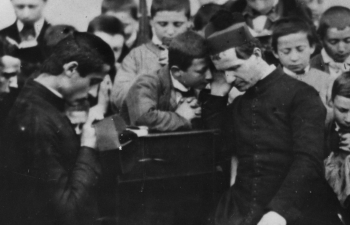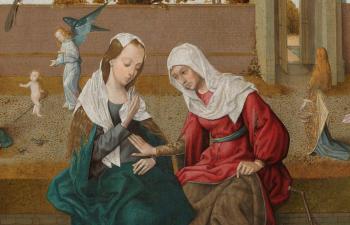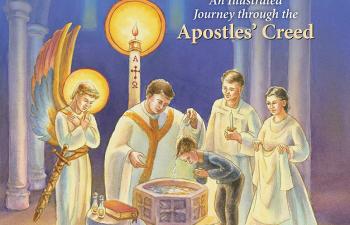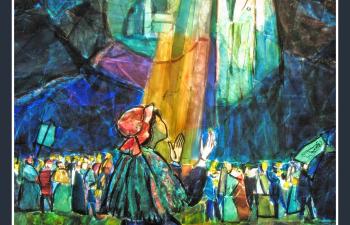How important is spiritual brotherhood? For those who are called to the ascetic life, either in a specific monastic order or in a “Benedict Option” community in a neighborhood, the consolation of fellowship with others who share your faith can be a vitally important spiritual aid. For St. Anthony the Abbot, his pilgrimage journey to find St. Paul of Thebes is a story of looking for a brother.
St. Anthony’s Journey
This image is one of several panel paintings that illustrate episodes from the life of St. Anthony, who is considered to be one of the founders of desert monasticism: the ascetic movement that began in the Egyptian desert in the 3rd century. Following the biographies of the saint by St. Athanasius and St. Jerome, this image recounts his journey to meet another hermit, St. Paul of Thebes. According to the story, St. Anthony was given knowledge of St. Paul by a heavenly message that told him there was someone who was as an ascetic like himself who had entered the desert even earlier than he. St. Anthony, wanting to see and know him, set out to find him. According to some versions, the human element of vainglory motivated St. Anthony; he wanted to disprove that someone else had actually originated the eremitic— or “desert inhabiting”—vocation. Along the way he experiences unusual challenges, which the collected stories identify as creatures who confront, tempt, or sometimes assist him.
Sano di Pietro of Siena
While there is debate over the attribution, it is certain that this painting was created by a Sienese artist in the early 15th century. Recent scholarship attributes the image to Sano di Pietro, also known as the “Master of the Osservanza,” the title coming from the masterwork, the Osservanza Altarpiece in Siena. Previously, this painting was attributed to Sassetta, a more prominent Sienese painter from that period. The Sienese school in the 15th century held onto the late Gothic style of icon-like depictions, with great attention to isolated details with no interest in the scientific depiction of true perspective space that was being developed in the Florentine Renaissance at this time. The powerful element of naturalism, which makes Renaissance and contemporary realism so convincing, is not to be found in this painting. However, this artist bends time and space toward a perception that goes beyond what a photographic depiction could ever portray.
Continuous Narrative
The painting relies on continuous narrative to depict a timeline of separate events all in one painting. This pictorial device has numerous examples from this time period. The most famous is The Tribute Money by the Florentine, Masaccio, who shows the scenes from Matthew 17:24-27, where St. Peter is first instructed by Jesus to go to the lake and catch a fish, then to pull a coin from its mouth to pay the temple tax tribute. Then the viewer’s attention shifts to Peter catching the fish at the edge of the water, then to Peter handing the money to the Roman official. All of these separate bits of the story occur in one continuous space, so we see St. Peter three times. This device was also used by Sano di Pietro to show St. Anthony setting off on his journey, then encountering a centaur at the edge of a forest, then finally arriving and embracing St. Paul. This way of showing time passing has a practical element: show three events but paint just one picture. However, the practical element is surpassed by the psychological effect of condensing the literal timeline into a flowing whole where the viewer’s eye moves the clock.
The rest of this online article is available for current Guild members.
This article is from The Catechetical Review (Online Edition ISSN 2379-6324) and may be copied for catechetical purposes only. It may not be reprinted in another published work without the permission of The Catechetical Review by contacting [email protected]


















